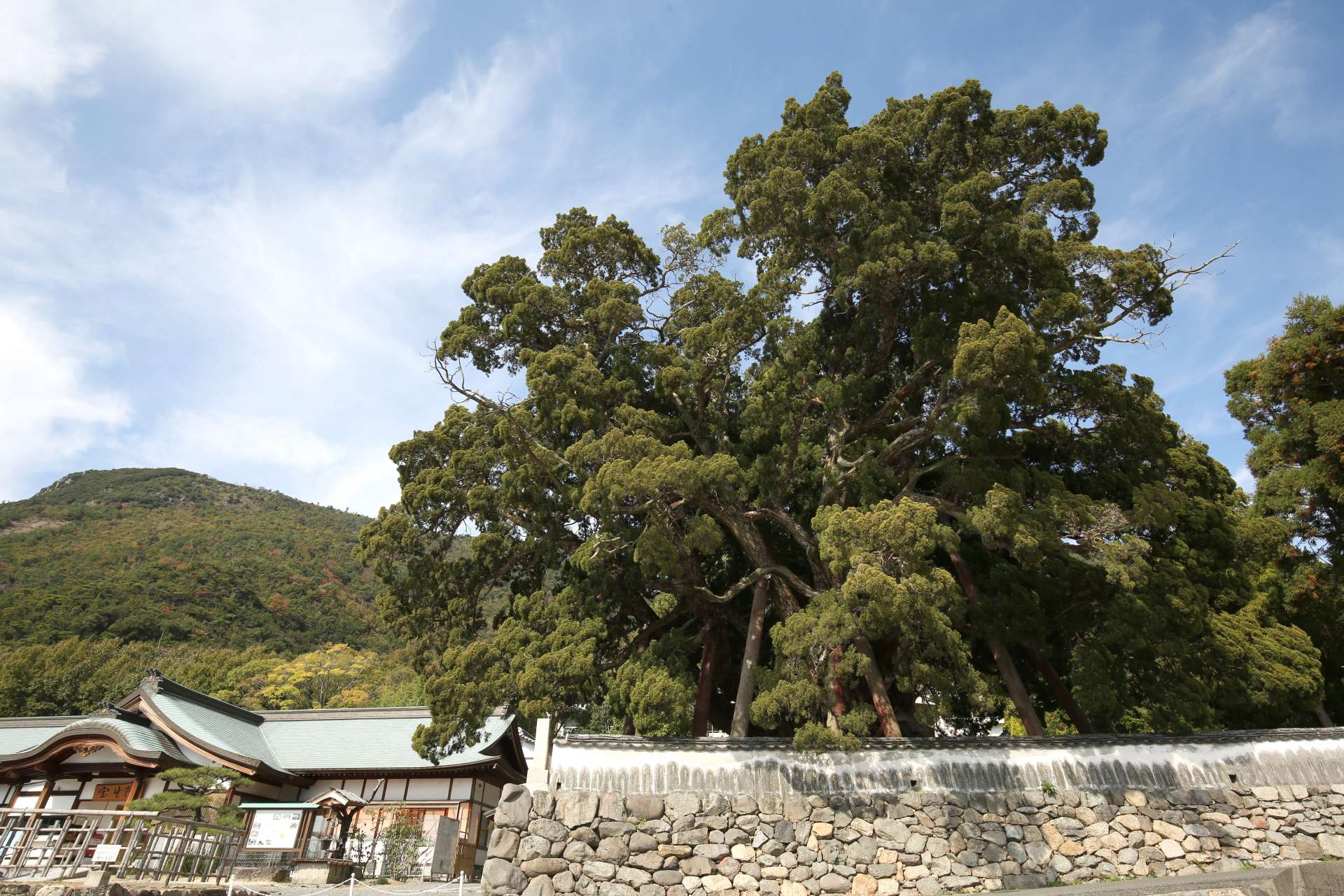這樹真的巨大,經過1600年,還生長茂密屹立不搖,相信是付出努力照顧才能如此!

Verified [Verified] denotes information that has been published with confirmation of its owing parties.
The Japanese Cypress of Hoshoin
A magnificent ancient tree that has survived for over 1,600 years.
Hoshoin is the 54th temple in the Shodoshima 88 temples pilgrimage route. The 51st temple, Hojo-bo, and the 52nd temple, former Hachiman Shrine, are also located within the same grounds and have long been revered by people. The highlight is the towering Japanese cypress tree on the east side of the grounds. Japanese cypress, or "Shinpaku" in Japanese, is an evergreen coniferous tree from the cypress family, native to the coastal areas of Shikoku and Kyushu. The "Shinpaku of Hoshoin" boasts an impressive size, with a root circumference of about 16.9 meters and a height of about 20.9 meters, making it one of the largest of its kind in Japan. It is believed to have been planted by the 15th Emperor Ojin during the Kofun period, and is over 1,600 years old. It was designated as a national natural monument in 1955.
The massive tree, which branches out in three directions about 1 meter above the ground, resembles a large forest. Furthermore, if you look closely, you will see branches that resemble sacred beasts related to Buddhism such as "elephants," "dragons," and "turtles." Many visitors come to this mysterious and sacred power spot.
Please note that as it is a designated national natural monument, it is not permitted to touch the branches or leaves.
Highlights
-
Designated as a national natural monument, this tree is over 1,600 years old.
-
The massive tree that resembles a large forest is mystical.
-
The branches of the tree resemble sacred beasts related to Buddhism, such as "elephants," "dragons," and "turtles."
-
As a national natural monument, touching the branches or leaves is not allowed, so please be cautious.
Photos
-
![A magnificent Japanese cypress towering towards the sky]()
A magnificent Japanese cypress towering towards the sky
-
![The surface of the Japanese cypress resembles the shape of a "dragon"]()
The surface of the Japanese cypress resembles the shape of a "dragon"
-
![Branches of the tree that evoke the image of a "turtle"]()
Branches of the tree that evoke the image of a "turtle"
-
![The figure of an "elephant," a symbol of happiness, can also be seen]()
The figure of an "elephant," a symbol of happiness, can also be seen
-
![The "Hoshoin," protected by the 1,600-year-old Japanese cypress]()
The "Hoshoin," protected by the 1,600-year-old Japanese cypress
Official FAQs
Frequently Asked Questions have been vetted and answered directly by each listing.
Q
Do you have signs or pamphlets in foreign languages? (If you do, which languages are available?)
Sorry, we don’t.
Q
Is free Wi-Fi available in the area?
No free Wi-Fi available.
Q
Is there a parking lot?
Yes, there is. There are two spaces for large buses.
Reviews
-
尹明
-
簡蓉
傳說應神天皇前往小豆島時親手栽種,江戶時代為小豆島代表性的巨樹哦👍
-
楊莎莎
寶生院真柏~有種植日本最大的真柏哦每個樹齡都高達1600年以上~
Details
- Name in Japanese
- 宝生院のシンパク
- Postal Code
- 761-4122
- Address
- 412 Kamisho, Shozugun Tonoshocho, Kagawa
- Telephone
- 0879-62-0682
- Closed
- Free to walk
- Business Hours
- 8:00am - 5:00pm
- Admission
- Free
- Access
- About a 35-minute ride by car from Sakate Ferry port.
- Official Website
- Official Website (Japanese)





